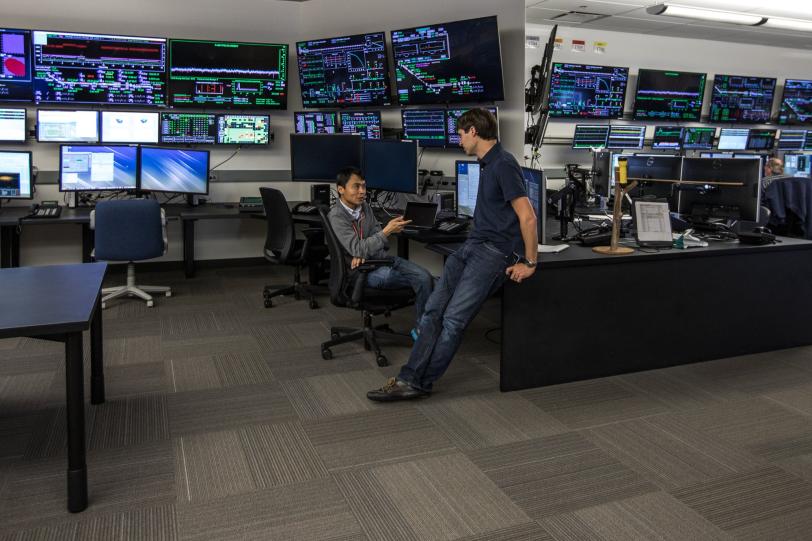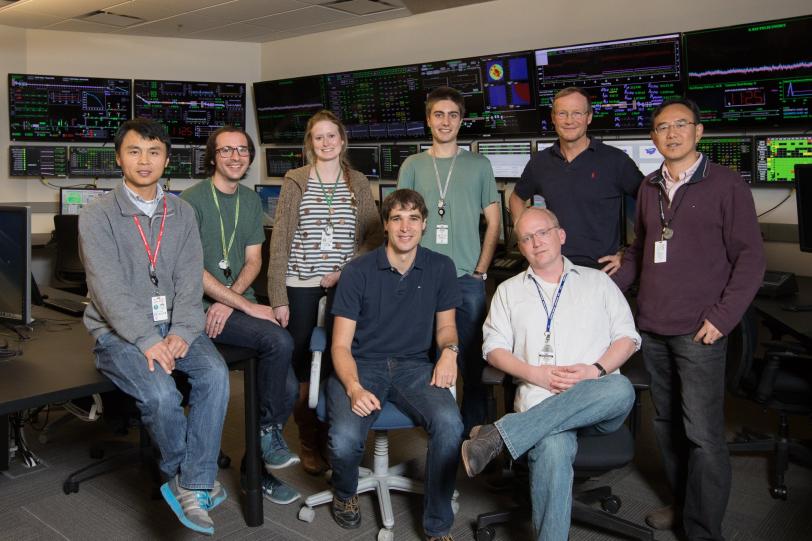Magnetic Trick Triples the Power of SLAC’s X-Ray Laser
The new technique will allow researchers to observe ultrafast chemical processes previously undetectable at the atomic scale.
By Mark Shwartz
Scientists at the Department of Energy’s SLAC National Accelerator Laboratory have discovered a way to triple the amount of power generated by the world’s most powerful X-ray laser. The new technique, developed at SLAC’s Linac Coherent Light Source (LCLS), will enable researchers to observe the atomic structure of molecules and ultrafast chemical processes that were previously undetectable at the atomic scale.
The results, published in a Jan. 3 study in Physical Review Letters (PRL), will help address long-standing mysteries about photosynthesis and other fundamental chemical processes in biology, medicine and materials science, according to the researchers.
“LCLS produces the world’s most powerful X-ray pulses, which scientists use to create movies of atoms and molecules in action,” said Marc Guetg, a research associate at SLAC and lead author of the PRL study. “Our new technique triples the power of these short pulses, enabling higher contrast.”
Magnetic Wiggles
The X-ray pulses at LCLS are generated by feeding beams of high-energy electrons through a long array of magnets. The electrons, which travel near the speed of light, wiggle back and forth as they pass along the magnets. This wiggling motion causes the electrons to emit powerful X-ray pulses that can be used for nanoscale imaging.
“When you image an atomic structure, you have a race going on,” said study co-author Uwe Bergmann, a distinguished staff scientist at SLAC. “You need an X-ray pulse strong enough to get a good image, but that pulse will destroy the very structure that you’re trying to measure. However, if the pulse is short enough, about 10 femtoseconds, you can outrun the damage. You can take the snapshot before the patient feels the pain.”
One femtosecond is one millionth of a billionth of a second. Generating high-power X-ray pulses that last only 10 femtoseconds has been a major challenge.
“The trick is to have the electrons packed together as tightly as possible when they start wiggling around,” Guetg explained. “It’s difficult to do, because electrons don’t like each other. They’re all negatively charged, so they repel one another. It’s a battle. We’re constantly trying to force them to together, and they’re constantly trying to move apart.”
To win the battle, Guetg and his SLAC colleagues used a special combination of magnets designed to bring the electrons closer together before they start emitting X-rays.
“One problem when you compress electrons is that they start kicking each other,” Guetg said. “As a result, the electron beam gets tilted, which impairs the light production and therefore the power of the X-ray pulses.”
In previous studies, Guetg had theorized that correcting the tilt would compress the electrons and produce shorter, more powerful bursts of X-rays.
“The electron beam is shaped like a banana,” said co-author Zhirong Huang, an associate professor at SLAC and at Stanford University. “We corrected the curvature of the banana to make it a straight, pencil-like beam.”
Dramatic Results
The results were dramatic. Straightening the beam increased the power of the X-ray pulses by 300 percent, and each pulse lasted only 10 femtoseconds.
“In an ingenious way, Marc and his colleagues were able to compress these electrons like a pancake before they drifted apart,” Bergmann said. “That allowed them to create very short X-ray pulses that are about 1,000 times more powerful than if you focused all the sunlight that hits the Earth onto one square centimeter. It’s an incredible power.”
Bergmann has already used the new technique to create nanoscale images of transition metals such as manganese, which is essential for splitting water to form oxygen molecules (O2) during photosynthesis.
“By pushing the frontier of laser science we can now see more and hopefully learn more about chemical reactions and molecular processes,” he said.
The SLAC team hopes to build on their results in future experiments.
“We want to make the new technique operational and robust so that anyone can use it,” Huang said. “We also want to keep improving the power with this technique and others. I would not call this the final limit.”
The study is co-authored by SLAC staff scientists Alberto Lutman, Yuantao Ding, Timothy Maxwell and Franz-Josef Decker. Financial support was provided by the Department of Energy’s Office of Science. LCLS is a DOE Office of Science user facility.
Citation: M. W. Guetg et al., Physical Review Letters, 3 January 2018 (120.014801)
For questions or comments, contact the SLAC Office of Communications at communications@slac.stanford.edu.
SLAC is a multi-program laboratory exploring frontier questions in photon science, astrophysics, particle physics and accelerator research. Located in Menlo Park, Calif., SLAC is operated by Stanford University for the U.S. Department of Energy's Office of Science.
SLAC National Accelerator Laboratory is supported by the Office of Science of the U.S. Department of Energy. The Office of Science is the single largest supporter of basic research in the physical sciences in the United States, and is working to address some of the most pressing challenges of our time. For more information, please visit science.energy.gov.







